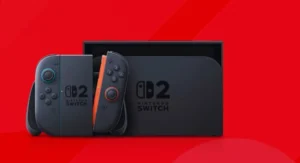10 Ways the Internet of Things (IoT) Is Changing The Face Of Businesses Right Now?
By TOI Staff
September 30, 2023
Update on : September 30, 2023

Although Tesla has made great gains in the electric vehicle sector, connectivity is also a significant aspect of their vehicles. Every vehicle has a standard in-vehicle Wi-Fi connection for things like basic mapping, navigation, and audio streaming. Tesla’s Premium connection gives users cellular data and Wi-Fi access to all connection functions. Tesla also provides drivers with the option of connecting to their car through the Tesla app, which allows drivers to manage the vehicle’s temperature, see charging history, and arrange for servicing and roadside assistance. These connected cars are the best example of IoT.
Basically, everything you see that can be linked to the internet is a component of the Internet of Things excluding the traditional computing devices like computers, smartphones, and tablets. The Internet of Things (IoT) is the network of physical objects (e.g., computers, appliances, cars, people) that are embedded with electronics, software, or sensors to enable remote data gathering and control. Executives in several industries have begun to see the potential benefits of IoT technologies. Organizations have become more automated as a result of the widespread use of sensors, communication devices, and identification chips that are all linked to the cloud and analytics engines.
Perks Of Internet Of Things (IoT) For Businesses
Internet of Things (IoT) technology has made it possible for businesses of all sizes, including SMEs, to get access to real-time data, which in turn has led to improved decision-making. Applying IoT allows businesses to boost their productivity and efficiency, which in turn benefits their customers. So, how exactly can solutions built on the Internet of Things revolutionize businesses? And how do they help businesses? Read out to explore the miracles of IoT in the business world, and know how it can be useful for businesses.
1. Asset And Inventory Tracking
Internet of Things apps may help you keep track of stock by providing automated control alternatives. The Internet of Things (IoT) asset monitoring is a promising approach to finding misplaced goods in the supply chain. Implementing IoT hardware and software in warehouses might improve inventory management. Integration of monitoring systems with the Internet of Things and analytics also aids in the prevention of thefts before they occur.
Automatic alerts on the asset’s location and the ability to track numerous assets are made possible with the use of IoT technology, reducing the likelihood of human mistakes. The Internet of Things (IoT) enables sensors to report on real delivery conditions like humidity, temperature, and vibration, which improves supply chain security and helps anticipate potential problems. That is essential for dealing with perishable products, and it also aids in minimizing or eliminating faults and waste, which contributes to cost savings.
2. Data Analysis And Interpretation
Almost all businesses have seen a dramatic improvement in data processing efficiency since adopting IoT. In addition to facilitating the acquisition of actionable data in real-time, IoT systems also provide the monitoring of trends indicative of how users interact with pertinent equipment. By delving into these trends, the app may learn to function more efficiently and improve the user experience.
Meanwhile, Internet of Things technology may help businesses analyze the data they acquire to fuel expansion. Using this data, companies may better understand their clientele, innovate in response to feedback, and develop novel advertising and marketing strategies.
3. Creating Brand-New Markets
With the help of the IoT platform and its built-in predictive maintenance algorithm, businesses can focus on product development and performance monitoring. New avenues of innovation in the form of ongoing engagement and value-added services are made possible by the practicality of transferring IoT data throughout an organization’s network of customers and partners.
As an added bonus, Internet of Things solutions enable businesses to experiment with alternative business models and generate income. Data acquired is valuable in and of itself, but the linked nature of items also allows firms to provide subscription-based services to consumers. This may help businesses lessen the financial burden of breaking into the market.
4. Incorporating Productive Advertising Practices
Marketers no longer have to rely on marketing surveys or contact centres to get information about their target population, thanks to IoT devices. Devices of this kind may be used to keep tabs on a wide variety of operations, surroundings, and other metrics, and then to pool and analyze the results. As a result, marketers may get knowledge and craft personalized messaging for each consumer.
Manufacturers create IoT-enabled products that can get firmware updates and give manufacturers valuable data about their products’ use. Therefore, IoT technology allows producers to learn more about their products’ operation. Additionally, it enables forecasting future client needs, which is essential for implementing novel advertising approaches.
5. Generating Timely Insights
Businesses are already seeing the benefits of the transparency made possible by real-time data acquired from processes, equipment, or personnel through sensors. Changes may be seen, for instance, in the retail sector, one of the key businesses. Internet of Things (IoT) equipped security cameras and smart shelves provide retailers with real-time information about consumers, allowing them to better stock items on-shelf, increase sales and boost revenues.
6. Omnichannel Service Facilitation
Streamlining the whole buying process by adopting an omnichannel strategy has made it a popular trend in recent years. Companies use the Internet of Things to make this service possible, greatly improving their customers’ experiences. Sensors built into a variety of internet-connected devices let businesses monitor distant facilities and respond quickly to customer requests for help with operations, status, or service levels. For instance, businesses may install IoT-enabled shelves with high-definition optical sensors in their warehouses to advertise product prices and provide accurate stock counts.
7. Increasing Security at Work
Improving workplace safety is one of the many benefits of deploying IoT-enabled sensors and wearables in the manufacturing, construction, and other heavy sectors. With the help of these gadgets, project managers may assess the health of their teams and determine whether they are in danger. Companies can react swiftly to catastrophes because they know exactly where their staff are thanks to technologies like GPS. Finally, adding surveillance cameras to a building is a good way to guard its most prized possessions. IoT and bots have made great contributions to increasing the security of businesses. Bots like Bitcoin Trader allow users to trade their assets safely and securely.
8. Boosting Productivity and Effectiveness
Information gathered from various IoT devices aids organizations in increasing output across the board, from the manufacturing process to the logistics of transporting packages. That provides for accelerated, efficient, and low-cost operation and job completion. Internet of Things (IoT) solutions help businesses minimize costs by decreasing the amount of manual labour required to complete tasks and by increasing the scope for more automation.
In addition, IIoT deployments are reshaping the manufacturing sector by facilitating the development of data-driven smart production methods.
Applications built for the IIoT allow businesses to keep tabs on machinery, generate data for monitoring its state, remove performance bottlenecks in production lines, and notify personnel when machinery requires maintenance. As a result, equipment uptime, quality, and operating expenses are all improved while costs are reduced.
9. Strengthening Relationships With Clients
By connecting all of a company’s touchpoints, IoT plays a vital role in enhancing the quality of service provided to customers. With this consolidated information, businesses can better tailor their offerings to each individual client and deliver on their expectations. Internet of Things (IoT) technologies, such as smartphone-connected card readers, streamline the payment processing.
Meanwhile, businesses may employ Internet of Things-enabled in-store cameras to gauge customers’ reactions to discounts and other in-store events. Chatbots and AI combined with Internet of Things technologies aid in customer service. Chatbots may compile data and identify specific problems with a company’s goods or services. Further, instantaneous assistance may be provided to customers by merging AI with IoT.
10. Making Smart Manufacturing Facilities
By integrating factory equipment, workers, and Big Data analytics into a digitally linked environment, IIoT solutions allow businesses to convert conventional factories into smart ones. Moreover, IIoT technology enables not only data collection and analysis but also the incorporation of past experience into future decisions. A smart factory can thus detect patterns in the data it collects and use those predictions to improve its operations. This aids businesses in automating crucial activities, such as smart manufacturing workflows.
Furthermore, industries may use IIoT across all accessible facilities to assess their waste output and get vital information like their energy and water use patterns.
Key Takeaways
With the proliferation of IoT technology, global connectivity is likely to skyrocket. This opens up additional ways for companies to streamline their operations and boost their bottom line. This requires them to not only be able to manage the new, high-tech infrastructure but also to be ready to make the first investment in IoT technology. New, specialist personnel may need to be hired, and existing staff may need to be redistributed. The next technological revolution has already started, and firms that wish to remain competitive will need to adapt.
Read more: 10 Ways the Internet of Things (IoT) Is Changing The Face Of Businesses Right Now?















